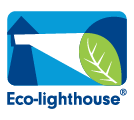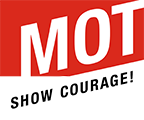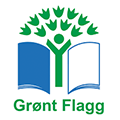Personal Project Guide
CLICK HERE TO ACCESS THE PERSONAL PROJECT TIMELINE
Personal Project Guide
Student Name:_______________________________________
Supervisor:______________________________________
Asker International School Mission Statement
Asker International School will seek to assist each student to develop to his/her full potential, to become a versatile, effective and responsible citizen of the world. We will do this within a secure and stimulating environment, delivering curricular programmes developed and authorized by the International Baccalaureate Organization (IBO), with English as the medium of instruction.
School values and beliefs
AIS does not wish to impose a particular system of belief on any member of the school: we will aim to create an atmosphere of freedom, tolerance and mutual respect for all forms of belief and non-belief, seeking to emphasize what unites us, and not what divides us. Our emphasis will be on mutual respect: each student is to be encouraged to experience and understand the diversity of cultural, religious and political systems with which they come into contact. As an international school, we will be committed to fostering international understanding, and an awareness in each student of issues such as peace, freedom, and care of the environment – issues which are of concern to us all as world citizens.
Introduction
Dear Students, Parents and Supervisors,
This handbook contains information and guidelines for students, mentors and supervisors. We consider that the effective use of the handbook is crucial for students to document their Personal Project fully to maximize their IB MYP achievement. Students should be using this book as a reference for whenever they are doing something related to the Personal Project.
We are excited about the opportunities that the Personal Project provides to our Grade 10 students. It allows students to explore, research and develop skills in a topic that is their passion which is not directly related to their daily school work and that they may not otherwise attempt.
Brent Jane
MYP Coordinator and Personal Project leader
Table of Contents
Nature of the MYP Personal Project
The Personal Project provides an opportunity for students to take an independent and age-appropriate exploration into an area of interest. Through the process of inquiry, action and reflection, students are encouraged to demonstrate and strengthen their ATL skills.
The project provides an excellent opportunity for students to produce a truly personal and often creative product and to demonstrate a consolidation of their learning in the MYP.
Elements a middle level education should cultivate
Aims
The aims of the MYP Personal Project state what a student may experience and learn.
The Personal project is an opportunity to:
Inquire
-
Explore an interest that is personally meaningful
-
Take ownership of their learning by undertaking a self-directed inquiry
Act
-
Transfer and apply skills in pursuit of a learning goal and the creation of a product
Reflect
-
Recognize and evidence personal growth and development
Requirements
In schools in which the MYP finishes with year 5 of the programme, all students must complete the personal project, with the majority of their work undertaken in the final MYP year. Students are expected to spend a minimum of 25 hours on their personal project.
Schools must ensure that:
• The project does not form part of the curriculum for any subject group, although subjects may support the completion of the project
• All supervisors of the project are familiar with this guide and understand their roles and responsibilities
• The project is assessed and internally standardized by the supervisors in the school according to the criteria stated in this guide.
The role of the supervisor
The supervisor’s responsibility is to provide guidance to students in the process and completion of the project.
This includes:
• ensuring the chosen MYP project topic satisfies appropriate legal and ethical standards with regard to health and safety, confidentiality, human rights, animal welfare and environmental issues
• giving guidelines about the MYP project
• providing a timetable with deadlines
• providing the assessment criteria for the project
• giving advice on how to keep and curate evidence of the process
• emphasizing the importance of personal analysis and reflection
• providing formative feedback
• ensuring requirements for academic integrity are met
• confirming the authenticity of the work submitted
• assessing the MYP project using the criteria in this guide
• participating in the standardization of the assessment process
• providing personal project teacher assessed totals to the MYP coordinator to enter in the International Baccalaureate Information System (IBIS).
Students should receive information and guidance that includes:
• guidelines about the MYP project
• a timetable with deadlines
• the assessment criteria for the project
• advice on how to keep and use a process journal
• the importance of personal analysis and reflection
• formative feedback
• requirements for academic honesty.
Each student has his or her own supervisor who has been allocated by the School.
The role of Specialist/Mentors in the Community
Students may decide to seek out and use specialists or mentors within the community who facilitate access to research and evidence, provide information to extend skills and knowledge and model good practice. In these cases, the community member guides and supports the students throughout the process. It is important that students still receive guidance from their supervisor and the school relating to the project objectives and assessment. Parents, supervisors and the school should be aware of any legal requirements when using an external specialist in the interest of student safety.
AIS student timeline for completing the project
Academic Honesty
For MYP projects, students and their supervisors must use the MYP projects academic honesty form provided by the IB to note their meeting dates and the main points discussed and to declare the academic honesty of work.
This is the responsibility of the student and must be entered through Managebac, which will automatically generate the form.
Only three meeting dates need to be entered; in most cases, meetings selected for entry are at the start of the project, in the middle of the project and at completion of the project. The final declaration must be signed by the student and the supervisor on submission of the final report or presentation.
Approaches to Learning
MYP projects are culminating activities through which students present, in a truly individual way, their development of ATL skills.
ATL skills that students have developed in subject groups will prepare them for working more independently and developing a MYP project over an extended period of time. Projects, essays and investigations carried out in the subject groups are important vehicles for helping students to develop the skills and attitudes needed to complete MYP projects.
ATL skills provide a solid foundation for learning independently and with others, demonstrating learning, and reflecting on the process of learning. They help students to become more autonomous, strategic and self-motivated and ultimately prepare students for responsible participation in local and global contexts.
Students will demonstrate how they have met the objectives through their report at the end of the personal project. They will be expected to communicate clearly, accurately and appropriately, utilizing communication, organization and reflection as ATL skills.
Students have the opportunity to develop affective skills—mindfulness, perseverance, emotional management, self-motivation and resilience—throughout the entire process. This skill set contributes to managing state of mind and a healthy, balanced approach to the projects.
Personal Project objectives
The objectives of the MYP personal project state the specific targets that are set for learning. They define what students should be able to accomplish as a result of completing the project.
Students must address all strands of all three objectives in the MYP personal project.
These objectives relate directly to the assessment criteria found in the “MYP personal project assessment criteria” section of this guide.
Objective A: Planning
Students should be able to:
i. state a learning goal for the project and explain how a personal interest led to that goal
ii. state an intended product and develop appropriate success criteria for the product
iii. present a clear, detailed plan for achieving the product and its associated success criteria.
Objective B: Applying skills
Students should be able to:
i. explain how the ATL skill(s) was/were applied to help achieve their learning goal
ii. explain how the ATL skill(s) was/were applied to help achieve their product.
Objective C: Reflecting
Students should be able to:
i. explain the impact of the project on themselves or their learning
ii. evaluate the product based on the success criteria.
The Process
Students are expected to document their process. In this way, they demonstrate their working behaviours and academic honesty. Students can choose how they gather evidence of their process. They are responsible to provide pieces of evidence for each strand of the three objectives. Students may:
-
Use a process journal
-
Use a range of tools / generate evidence across a range of platforms
-
Develop own format and design
The media for documenting the process can vary depending on the student preference. It can be written, visual, audio or a combination of these.
Guidelines for collecting evidence of the process
Students show their supervisors evidence of their process at meetings. Although legibility is important, the recording of critical and creative thinking and reflection is more important than neatness and presentation.
Goal setting
The personal project is truly personal because each student sets their own goal based on something that they find interesting. Students may draw inspiration from their prior experience in the MYP, such as:
• a global context that they find particularly compelling
• a service as action experience that they would like to build on
• a unit of inquiry that they would like to explore further.
The overall goal for the personal project consists of two interrelated parts: a product and a learning goal. The product is what students will create and the learning goal is what they want to learn. While some students might begin the goal-setting process with a product in mind, other students will begin with a learning goal from which they will decide what kind of product to pursue. The learning goal that students
begin with could lead to a variety of different products, just as a product could relate to a variety of learning goals.
Example:
Note that the product may be a tangible artifact such as a sculpture, film, story or model, or it could be a non-tangible result such as an awareness-raising campaign, learning to play a new piece of music or improving athletic performance.
Creating an action plan
Students will create an action plan for achieving their chosen product. This process is iterative: as students create their action plan, they will gain a sense of whether they can achieve the product within a reasonable time frame and they may revise their learning goal and/or product accordingly.
To create a detailed action plan, students should develop success criteria for their product and determine the necessary steps or actions that will be required to meet those criteria. This will also establish a foundation to explain whether or not the goal was achieved in the report.
The process of developing success criteria and establishing an action plan to meet the success criteria is likely to require some research. Similarly, students may need to carry out research related to their learning goal, which could be included as part of their action plan.
Applying the ATL skills
Throughout the personal project, students should collect evidence of how they have applied the ATL skills.
This evidence may include:
• visual thinking diagrams
• bulleted lists
• charts
• short paragraphs
• notes
• timelines, action plans
• annotated illustrations
• annotated research
• artifacts from inspirational visits to museums, performances, galleries
• pictures, photographs, sketches
• up to 30 seconds of visual or audio material
• screenshots of a blog or website
• self- and peer-assessment feedback.
At the end of the personal project, students will select pieces of evidence to demonstrate the ATL skills that have had the most impact on their project. They must have at least one piece of evidence that demonstrates how ATL skills were applied to extend their learning goal, and another must support their analysis of how ATL skills were applied to achieve the product.
Evaluating the product
When students have completed their product, they use the success criteria that were developed early in the personal project to evaluate the extent to which they achieved their product goal.
This evaluation forms the basis for explaining the impact of the project and can also help students to select the evidence of the ATL skills to include in their report.
Explaining the impact of the Personal Project
Because the personal project consists of a learning goal and a product, it can result in a variety of impacts on the student and/or the community.
When reflecting on the personal project, it is important to remember that the process can have a positive impact even if the product is not successful.
The Final Report
A report is a spoken or written account of something observed, heard, done or investigated. A report aims to inform as clearly and succinctly as possible. The MYP personal project report demonstrates a student’s engagement with his or her personal project by summarizing the experiences and skills recorded throughout the process.
The report should be presented in identifiable sections following the MYP personal project objectives— planning, applying skills, and reflecting. The report must include evidence for all the strands of all criteria.
The Personal Project objectives and how they might be evidenced
Please note that the above are offered as suggestions and that students are encouraged to gather evidence in a variety of ways throughout the project.
The format of the report can vary depending on the resources available and the interests of the student. Students should take into consideration learning preferences, personal strengths and available resources when deciding on the best format for the report. The ability to communicate clearly and concisely is essential to demonstrate the elements of the report and reach the highest levels of the criteria. The student’s supervisor is responsible for providing guidance on the format of the report.
Students may submit their report and evidence in any combination of documents and recordings that fits within the limits outlined in the table below.
To ensure that the documents and recordings are clear, the guide will also include specific clarifications for preparing the documents and recordings.
1. To ensure that the written part of the report is clearly legible, each page must have a minimum:
• 11-point font size
• 2 cm margins.
2. Evidence presented in images must be clearly visible at the size submitted.
3. Audio and video must be recorded and submitted in real time.
4. Visual aids may be used to support spoken reports. However, evidence and examples presented in the visual aids should be submitted as documents. Visual aids presented only in video format will not be considered for assessment.
5. The bibliography is uploaded separately and is not included in the page limit.
6. Please do not include a title page; if included, it will count towards the page limit.
When submitting the report for assessment, students must also include the completed academic honesty form. This is not included in the page limit.
Submitting the Project for Assessment
Students must include:
• the completed Academic Honesty Form;
• the product (unless too large or not relevant to submit);
• the report
• Bibliography: An alphabetical list of every source used to research the entire project; and
Submissions must be uploaded to Managebac as instructed by the Personal Project coordinator.
Exhibition
The work of students will be celebrated in a Personal Project Exhibition in which the community will be invited to come and discuss projects with students. Students will be assembled at a location within the school where they will share their process journal, report, and any visual aids that they would like to share with the community. All students will share their projects at once while parents, teachers and community members roam the area and mingle with students, inquiring about their process and product. This gives students an opportunity to not only share what they did in their project, but also build important communication skills by interacting with the diverse crowd.
Using Assessment Criteria
Assessment for the MYP Personal Project is criterion-related, based on three equally weighted assessment criteria.
MYP Personal Projects must assess all strands of all three assessment criteria. In the MYP, objectives correspond to Assessment Criteria. Each criterion has eight possible achievement levels (1–8), divided into four bands that generally represent limited (1–2); adequate (3–4); substantial (5–6); and excellent (7–8) performance. Each band has its own unique descriptor, which supervisors use to make “bestfit” judgments about students’ progress and achievement.
Objectives and Assessment Criteria
Criterion A: Planning
In the personal project, students should be able to:
i. state a learning goal for the project and explain how a personal interest led to that goal
ii. state an intended product and develop appropriate success criteria for the product
iii. present a clear, detailed plan for achieving the product and its associated success criteria.
Criterion B: Applying skills
In the Personal Project, students should be able to:
i. explain how the ATL skill(s) was/were applied to help achieve their learning goal
ii. explain how the ATL skill(s) was/were applied to help achieve their product.
Criterion C: Reflecting
In the Personal Project, students should be able to:
i. explain the impact of the project on themselves or their learning
ii. evaluate the product based on the success criteria.
Notes about Impact of the project:
• could refer to any aspect of having done the project: inquiry, action and/or reflection
• could include progress made towards the learning goal
• could include ways in which the student has grown as a learner, such as improvement in the ATL skills or learner profile attributes
• could include ways in which the student has grown or changed as a result of the project.





